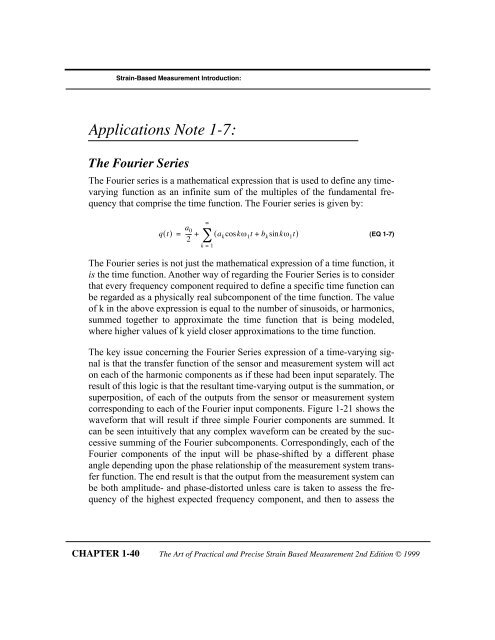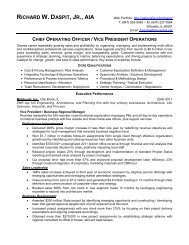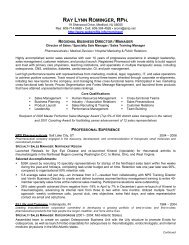The Art of Practical and Precise Strain Based ... - Webprofile.info
The Art of Practical and Precise Strain Based ... - Webprofile.info
The Art of Practical and Precise Strain Based ... - Webprofile.info
- No tags were found...
Create successful ePaper yourself
Turn your PDF publications into a flip-book with our unique Google optimized e-Paper software.
<strong>Strain</strong>-<strong>Based</strong> Measurement Introduction:Applications Note 1-7:<strong>The</strong> Fourier Series<strong>The</strong> Fourier series is a mathematical expression that is used to define any timevaryingfunction as an infinite sum <strong>of</strong> the multiples <strong>of</strong> the fundamental frequencythat comprise the time function. <strong>The</strong> Fourier series is given by:qt ()=¥a---- 0+ a2 å ( k coskw 1 t + b k sinkw 1 t)k = 1(EQ 1-7)<strong>The</strong> Fourier series is not just the mathematical expression <strong>of</strong> a time function, itis the time function. Another way <strong>of</strong> regarding the Fourier Series is to considerthat every frequency component required to define a specific time function canbe regarded as a physically real subcomponent <strong>of</strong> the time function. <strong>The</strong> value<strong>of</strong> k in the above expression is equal to the number <strong>of</strong> sinusoids, or harmonics,summed together to approximate the time function that is being modeled,where higher values <strong>of</strong> k yield closer approximations to the time function.<strong>The</strong> key issue concerning the Fourier Series expression <strong>of</strong> a time-varying signalis that the transfer function <strong>of</strong> the sensor <strong>and</strong> measurement system will acton each <strong>of</strong> the harmonic components as if these had been input separately. <strong>The</strong>result <strong>of</strong> this logic is that the resultant time-varying output is the summation, orsuperposition, <strong>of</strong> each <strong>of</strong> the outputs from the sensor or measurement systemcorresponding to each <strong>of</strong> the Fourier input components. Figure 1-21 shows thewaveform that will result if three simple Fourier components are summed. Itcan be seen intuitively that any complex waveform can be created by the successivesumming <strong>of</strong> the Fourier subcomponents. Correspondingly, each <strong>of</strong> theFourier components <strong>of</strong> the input will be phase-shifted by a different phaseangle depending upon the phase relationship <strong>of</strong> the measurement system transferfunction. <strong>The</strong> end result is that the output from the measurement system canbe both amplitude- <strong>and</strong> phase-distorted unless care is taken to assess the frequency<strong>of</strong> the highest expected frequency component, <strong>and</strong> then to assess theCHAPTER 1-40 <strong>The</strong> <strong>Art</strong> <strong>of</strong> <strong>Practical</strong> <strong>and</strong> <strong>Precise</strong> <strong>Strain</strong> <strong>Based</strong> Measurement 2nd Edition © 1999
















